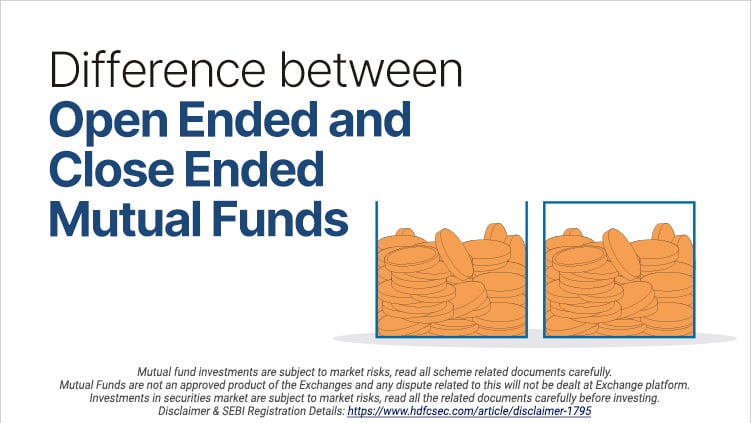What’s the difference between Open-Ended and Close-Ended Mutual Funds?
Mutual funds are one of the most popular market-linked investment options in India. Considering your investment goals and risk appetite, you can invest in funds that are linked to equities, debts, or both. Mutual funds can be classified into two types based on their structure – Open- Ended and Close-Ended Funds. The article offers a quick introduction followed by a clear distinction between the two types of funds.
Open-Ended Mutual Fund
An Open-Ended Mutual Fund is a mutual fund scheme that is always open for investment. Furthermore, it does not follow a lock-in period, which means you can redeem your investment at any given time. This ensures the invested money is easily accessible in your time of need.
Note, since the mutual fund units are purchased and sold on the go, your fund’s Net Asset Value (NAV) is calculated daily. You need to reach out to your preferred fund house to invest in these funds or you can invest online.
Close-Ended Mutual Fund
Close-Ended Mutual Fund is a type of mutual fund you can invest in only when the New Fund Offer (NFO) is made. You cannot invest in the fund once the NFO period expires. Close-ended mutual funds follow a lock-in period. You cannot redeem your investment before the completion of this lock-in period.
Some Close-Ended Mutual Fund schemes on completion of the lock-in period get converted to an Open-Ended Mutual Fund automatically. If it does not get converted automatically, the fund house may channel the proceeds from a Close-Ended Mutual Fund redemption to an Open-Ended Mutual Fund. This is only done after taking investors’ consent.
Difference between Open-Ended and Close-Ended Mutual Fund
Refer to the following table to obtain a clear understanding of the difference between Open-Ended and Close-Ended Mutual Fund:
|
Point of difference |
Open- Ended Mutual Fund |
Close-Ended Mutual Fund |
|
Mandatory lock-in period |
Open-Ended Mutual Funds do not have a mandatory lock-in period unless it is an ELSS Fund. You can invest in these funds at any time. |
Close-Ended Mutual Fund follows a mandatory lock-in period. You can redeem your investment only after the lock-in period is over. These schemes can be subscribed only during the NFO. |
|
Liquidity |
These funds offer high liquidity due to the absence of a lock-in period. |
The liquidity of these funds is very low. |
|
Fund Size |
The fund size is flexible. |
The fund size is fixed. |
|
Fund’s price determination |
It is based on your fund’s NAV. |
It is based on the demand and supply of securities. |
|
Availability of track record |
You can easily find the fund’s performance track records available online. This allows you to make investment decisions based on facts. |
Since you invest in a close-ended mutual fund when an NFO is introduced, no track record is available. |
|
Investment mode |
You can invest by making a lumpsum investment or via a Systematic Investment Plan (SIP). |
You can invest in a closed-ended mutual fund only by making a lumpsum investment during the NFO period. |
In conclusion, both open-ended and close-ended mutual funds have their advantages and disadvantages. Investors may choose between the two depending on their goals, risk tolerance, and investment strategy.
Related Posts
Don't miss another Article
Subscribe to our blog for free and get regular updates right into your inbox.
Categories
newsletter
 HSL Mobile App
HSL Mobile App 



